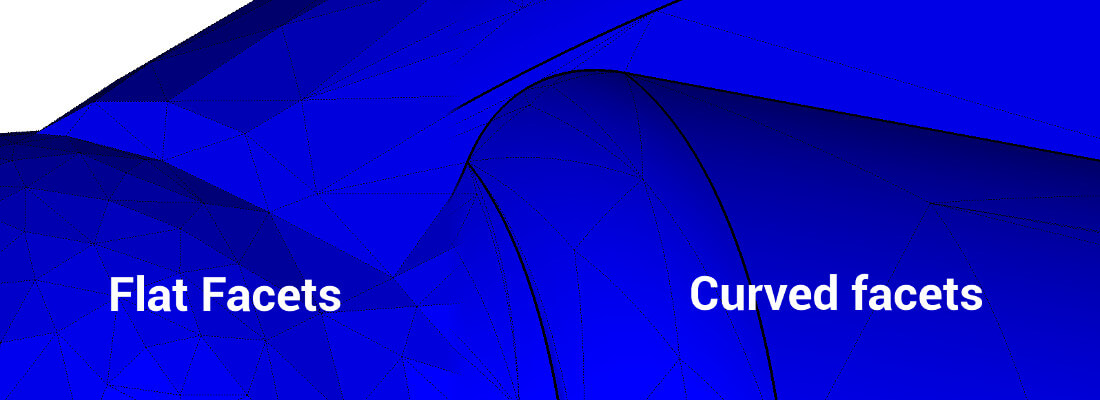To harness the full potential of 3D printing, a deep understanding of CAD preparation is essential. This stage is crucial for ensuring that design intent is flawlessly translated into the final 3D printed product. Central to this preparation is slicing technology, and CADfix has emerged as an invaluable asset, utilizing the power of curved facets for unmatched accuracy.
Understanding Mesh Facets
Before delving into the groundbreaking advantages of curved facets, let's acquaint ourselves with facets in meshing. In computational geometry, facets refer to the flat faces of polygons, usually triangles or quadrilaterals.
- Flat Facets: These flat faces approximate geometry by breaking it into numerous flat sections. Often used in traditional Finite Element Analysis (FEA) and other computational methods where geometry is split into simpler elements.
- Curved Facets: Unlike flat facets, curved facets are not planar. They excel in representing curved geometric surfaces, reducing the need for dense meshing. Their value escalates in high-order simulations where geometry accuracy directly impacts the outcomes.
From a practical standpoint, the choice between these facets depends on simulation requirements, specific geometry, and available computational resources.
Benefits of Curved Facets in Meshing
Why have curved facets become so crucial, particularly in the realms of 3D printing and CAD preparation? The benefits are numerous:
- Enhanced Geometric Representation: These facets capture the authentic geometry of curved surfaces, minimizing errors.
- Reduced Mesh Density: Achieve geometric fidelity without the need for extremely dense meshing, optimizing computational processes.
- Improved Simulation Accuracy: Especially vital in fields like Computational Fluid Dynamics, where geometric fidelity is paramount.
- Better Visual Quality: Visualizations are smoother and more aesthetically pleasing with curved facets.
CADfix and Curved Facet Technology
CADfix's approach to slicing leverages the strength of curved facet technology. This innovative method ensures that models prepared for 3D printing are of the highest quality, benefiting from CN or C1 facets.
Polygonal meshes, common in various applications, are undeniably versatile. However, continuity challenges persist. The strategy of subdividing meshes, while improving visual quality, tends to consume substantial resources. The introduction of curved facets by CADfix stands as the optimal solution.
In the ever-evolving field of manufacturing and 3D printing, CAD model preparation holds paramount importance. With the introduction of curved facet technology by CADfix, the future of precision-based, high-quality 3D printing appears more promising than ever.



